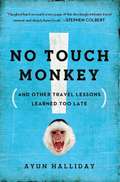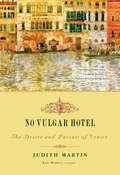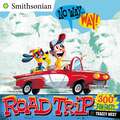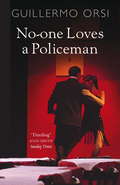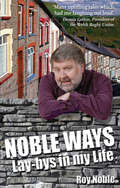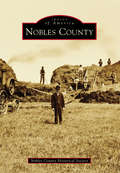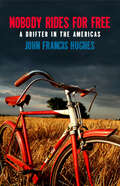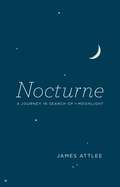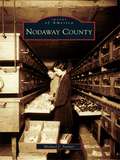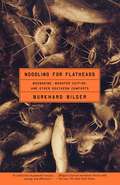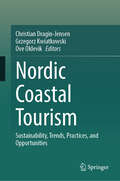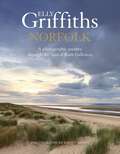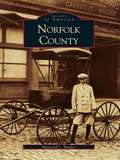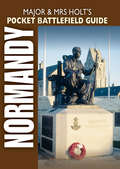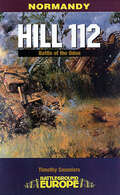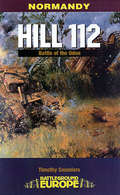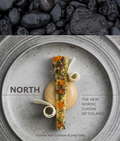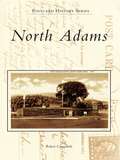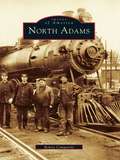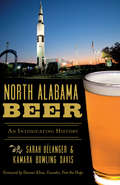- Table View
- List View
No Touch Monkey!: And Other Travel Lessons Learned Too Late
by Ayun HallidayAyun Halliday may not make for the most sensible travel companion, but she is certainly one of the most outrageous, with a knack for inserting herself (and her unwitting cohorts) into bizarre situations around the globe. Curator of kitsch and unabashed aficionada of pop culture, Halliday offers bemused, self-deprecating narration of events from guerilla theater in Romania to drug-induced Apocalypse Now reenactments in Vietnam to a perhaps even more surreal collagen-implant demonstration at a Paris fashion show emceed by Lauren Bacall. On layover in Amsterdam, Halliday finds unlikely trouble in the red-light district-eliciting the ire of a tiny, violent madam, and is forced to explain tampons to luggage-searching soldiers in Kashmir: "They're for ladies. Bleeding ladies." A self-admittedly bumbling tourist, Halliday shares-with razor-sharp wit and to hilarious effect-the travel stories most are too self-conscious to tell.This second edition includes an updated foreword.
No Vulgar Hotel: The Desire and Pursuit of Venice
by Judith Martin Eric Denker"Add No Vulgar Hotel to the list of books you must read before you come to Venice."--Donna Leon This is the definitive book for managing an incurable passion for a decaying, water-logged village. Whether you already have a raging case of Venetophilia or are among the fifteen million people who yearly put themselves in danger of contracting it, here is where you get your fix of Venetian wit, history, practicality, and enchantment.
No Way . . . Way!: Road Trip (Smithsonian)
by Tracey WestRoad Trip: Come Along for the Ride!The first title in No Way . . . Way!, the fun and funky fact-book series using photographs from across Smithsonian collections. Road Trip looks at people on the move: across the land, up in the air, or deep in the sea. The fascinating facts and figures span history, geography, science, engineering, transportation, invention, and architecture--not to mention crazy inventions, weird attractions, and other wacky stuff!
No-One Loves a Policeman
by Guillermo OrsiIt is December 2001 and Argentina is in political and economic meltdown. Pablo Martelli, once in an elite branch of the police force known to all as the 'National Shame', is a shadow of his former self, scraping by as a bathroom salesman. He cannot forget the enigmatic woman he met in a dance hall. She left him when she found out who he was working for, and he has never recovered from the blow. Late one evening, Martelli is summoned to a friend's coastal retreat. He arrives to find his friend dead and is drawn into a bewildering sequence of events, on an odyssey that leads him through vast, empty pampas, along endless highways and into ghost towns seething with danger and brutality, to the ailing heart of his country. Before long he is forced to uncover the truth of his past life. It is a dangerous confession: after all, no-one loves a policeman. A highly original crime novel with a rich, dark humour, a host of extraordinary characters and plenty of smoking guns.
No-One Loves a Policeman
by Guillermo OrsiIt is December 2001 and Argentina is in political and economic meltdown. Pablo Martelli, once in an elite branch of the police force known to all as the 'National Shame', is a shadow of his former self, scraping by as a bathroom salesman. He cannot forget the enigmatic woman he met in a dance hall. She left him when she found out who he was working for, and he has never recovered from the blow. Late one evening, Martelli is summoned to a friend's coastal retreat. He arrives to find his friend dead and is drawn into a bewildering sequence of events, on an odyssey that leads him through vast, empty pampas, along endless highways and into ghost towns seething with danger and brutality, to the ailing heart of his country. Before long he is forced to uncover the truth of his past life. It is a dangerous confession: after all, no-one loves a policeman. A highly original crime novel with a rich, dark humour, a host of extraordinary characters and plenty of smoking guns.
Noble Ways: Lay-bys in My LIfe (Biography Ser.)
by Roy NobleKnown throughout Wales for his gentle self-deprecating sense of humour and brilliant TV and radio broadcasts, BBC presenter Roy Noble guides us through the "lay-bys" of his life; his warm, loving fifties Brynaman childhood; his college and teaching days; and his ultimate success in that most difficult of careers - showbusiness. A beautiful and entertaining depiction of the life of a truly extraordinary and much loved Welshman who has enriched the daily lives of millions. We meet his family and friends, the ordinary and the rich and famous. We rejoice at his triumphs, laugh at his blunders and cry at his unflinchingly honest depiction of personal tragedy.
Noble Ways: Lay-bys in My LIfe (Biography Ser.)
by Roy NobleKnown throughout Wales for his gentle self-deprecating sense of humour and brilliant TV and radio broadcasts, BBC presenter Roy Noble guides us through the "lay-bys" of his life; his warm, loving fifties Brynaman childhood; his college and teaching days; and his ultimate success in that most difficult of careers - showbusiness. A beautiful and entertaining depiction of the life of a truly extraordinary and much loved Welshman who has enriched the daily lives of millions. We meet his family and friends, the ordinary and the rich and famous. We rejoice at his triumphs, laugh at his blunders and cry at his unflinchingly honest depiction of personal tragedy.
Nobles County (Images of America)
by Nobles County Historical SocietyLocated in the southwestern corner of Minnesota, Nobles County was first established in 1857. However, a financial panic and concerns about Indian conflicts delayed the area’s settlement until the 1870s. Railroad companies had only recently expanded their rail networks to this part of the state. Meanwhile, hundreds of people, including many Civil War veterans, began migrating to the region to make their homestead claims. They were attracted to these virgin prairies by the allure of plentiful land and fertile soil. Other new settlers chose to reside in one of the many small towns that had sprung up around the railroad depots, offering business services and community support to townspeople and the growing farm population. Though there have been changes over time in how people work the land, farming and agriculture-related industries continue to be the major driving forces of the county’s economy.
Nobody Rides for Free: A Drifter in the Americas
by John Francis HughesNobody Rides For Free: A Drifter in the Americas chronicles former bike courier John Hughes' rambles through Latin America on a bicycle. In this gripping mosaic-travellogue, readers are introduced to banditos, artists, grifters, would-be wives, dope fiends and attacking monkeys: a cast of characters who conspire to reduce him to alcoholic destitution. His last remaining $400 is spent sailing the Amazon, flying to Miami, and then hitchhiking across some of the most frightening highways in the United States with the goal of making it safely home to Vancouver. Throughout his adventures we learn about con-artistry, fear, and kindness set against the imposing backdrop of everything we think we know about the Americas. Nobody Rides For Free sheds light on obscure 1990s road culture while gearing itself to the needs of anyone with a desire to run from their demons on the open road.
Nocturne: A Journey in Search of Moonlight
by James Attlee“Nobody who has not taken one can imagine the beauty of a walk through Rome by full moon,” wrote Goethe in 1787. Sadly, the imagination is all we have today: in Rome, as in every other modern city, moonlight has been banished, replaced by the twenty-four-hour glow of streetlights in a world that never sleeps. Moonlight, for most of us, is no more. So James Attlee set out to find it. Nocturne is the record of that journey, a traveler’s tale that takes readers on a dazzling nighttime trek that ranges across continents, from prehistory to the present, and through both the physical world and the realms of art and literature. Attlee attends a Buddhist full-moon ceremony in Japan, meets a moon jellyfish on a beach in Northern France, takes a moonlit hike in the Arizona desert, and experiences a lunar eclipse on New Year’s Eve atop the snowbound Welsh hills. Each locale is illuminated not just by the moonlight he seeks, but by the culture and history that define it. We learn about Mussolini’s pathological fear of moonlight; trace the connections between Caspar David Friedrich, Rudolf Hess, and the Apollo space mission; and meet the inventors of the Moonlight Collector in the American desert, who aim to cure all kinds of ailments with concentrated lunar rays. Svevo and Blake, Whistler and Hokusai, Li Po and Marinetti are all enlisted, as foils, friends, or fellow travelers, on Attlee’s journey. Pulled by the moon like the tide, Attlee is firmly in a tradition of wandering pilgrims that stretches from Basho to Sebald; like them, he presents our familiar world anew.
Nodaway County
by Michael J. SteinerOne of six counties carved out of the Platte Purchase, added to Missouri in 1836, Nodaway County appeared to its first white explorers to be a rolling prairie, marginal for agriculture but full of opportunity for those willing to bring hard work and ingenuity to the land. Within a generation of building cabins and experimenting with a wide variety of agricultural enterprises, the county boasted at least 17 towns, four railroad lines, 16 newspapers, and all the economic and cultural institutions necessary for boosters to lay claim to progress and civility. While residents of towns and the countryside often drew distinctions between one another, their lives were intertwined by mills, horse farms, livestock shows, new technology, churches, schools, public entertainment of every sort, and occasional times of hardship. By the 1920s, the communities of Nodaway County, supported by a vibrant and diverse rural economy, reached a zenith of locally generated economic growth and community activity, captured artfully by photographers during the decades that bracketed the turn of the 20th century.
Nomad's Land
by Mary Roberts RinehartA memoir of desert travel—by camel and horseback—from a beloved authorAn internationally renowned writer of mystery fiction, Mary Roberts Rinehart knows her way around an exotic setting. When faced with the Pyramids, the Nile, and the sprawling Egyptian desert in her own life, she does not fall in with the crowd of tourists waiting in line at the tombs of the Pharaohs. Instead, she hikes up her skirt, plants her pumps in the sand, and hops on a camel. She has but one question: Where am I supposed to sit?On a hundred-mile expedition into the Egyptian desert, Rinehart does her best to master the herky-jerk of this desert beast. But traveling with an entourage of well-mannered people, she finds that desert living is not completely stripped of the comforts of home. Upon returning to the United States, Rinehart makes an excursion out west, which, she finds, is where the true adventure begins.
Noodling For Flatheads
by Burkhard BilgerThe Old South is slow to give up its secrets. Though satellite dishes outnumber banjo players a thousand to one, most traditions haven't died; they've just gone into hiding. Cockfighting is illegal in forty-eight states, yet there are three national cockfighting magazines and cockpits in even the most tranquil communities. Homemade liquor has been outlawed for more than a century, yet moonshiners in Virginia still ship nearly one million gallons a year. Some of these pastimes are ancient, others ultramodern; some are illegal, others merely obscure. But the people who practice them share an undeniable kinship. Instead of wealth, promotion, or a few seconds of prime time, they follow dreams that lead them ever deeper underground. They are reminders, ultimately, that American culture isn't as predictable as it seems-that the weeds growing between its cracks are its most vital signs of life. In these masterfully crafted essays, Burkhard Bilger explores the history and practice of eight such clandestine worlds. Like John McPhee and Ian Frazier, he introduces us to people whose spirit of individualism keeps traditions alive, from a fifty-something female coon hunter who spends 340 nights a year in the woods to a visionary frog farmer and a man whose arms are scarred by the eighty-pound catfish he catches by hand. A fluid combination of adventure, history, and humor, Noodling for Flatheads is evocative, intelligent, and wonder-fully weird-a splendid antidote to the sameness of today's popular culture.
Nordic Coastal Tourism: Sustainability, Trends, Practices, and Opportunities
by Grzegorz Kwiatkowski Christian Dragin-Jensen Ove OklevikThis book explores sustainable tourism development and examines the development strategies of different coastal regions in the Nordic region. In recent decades, tourism research has been topical among researchers in the Nordic region and in international tourism literature. Especially important in this is research on coastal tourism, which is both a linear and area-based activity. An increased interest in coastal tourism has been determined by the fact that around 40 percent of the world’s population lives on the coast or within the coastal zone, and these communities are dependent on coastal tourism besides their other professions, such as fisheries, agriculture, and commercial port activities. Nordic coasts combine a rich maritime heritage and tradition with an unrivalled diversity of landscapes and natural refuges. Its oceans and seas are known for their biological richness and great beauty. Coastal and maritime tourism constitutes one of the Nordic countries' most important touristic thematic sub-sectors. With further perspectives for growth in the coming years, coastal and maritime tourism’s full potential is yet to be unveiled. Guaranteeing the conditions for sustainable coastal and maritime tourism development may significantly contribute to Nordic's economic growth and employment. It can also support the sustainable development of the more remote coastal regions, bringing the Nordics closer together and endowing coastal communities with sustainable solutions for the future.
Nordic Tourism
by Dieter K. Muller C. Michael HallTourism is a major industry in the Nordic countries (Denmark, Finland, Iceland, Norway and Sweden) as well as a growing field of academic study. For many cities and regions tourism is also increasingly recognised as being integral to economic, social and sustainable development. In addition, tourism also contributes to Nordic identity through destination promotion and tourism activities, including winter tourism and the tradition of access to common land, as well as specific forms of tourism, such as second homes. Nordic Tourism is the first comprehensive and accessible introduction to tourism in the region that links Nordic tourism research and concerns with key concepts in tourism studies. The book consists of eleven chapters dealing with issues ranging from, for example, marketing and policy to nature-based tourism, culture and the contribution of tourism to environmental change. The inclusion of case studies from leading Nordic researchers on specific destinations, attractions, resources, sectors and developments also provides a valuable learning tool for all students of tourism.
Nordicana: 100 Icons of Scandi Culture & Nordic Cool
by Kajsa Kinsella Arrow Film Distributors LtdYou've watched every Scandi TV series going, you have Nordic light fittings, and you want Birgitte Nyborg as your Prime Minister. Yes it's fair to say there is a general love-in with everything related to the northern countries.Over the last decade, the Nordic nations have quietly and unassumingly come to hold us in their thrall; but what is it, exactly, that we covet about their culture?Nordicana celebrates the objects, aesthetics and traditions that have inspired our obsession, with a quick introduction to 100 icons of Scandi style and Nordic cool, accompanied by beautiful illustrations.
Norfolk
by Elly GriffithsA stunning companion to Elly Griffiths' beloved crime series, the Dr Ruth Galloway Mysteries, and a photographic journey through magical Norfolk.Norfolk, a land of peaceful broads, marshy fens, sprawling coastline and shady brecks, is the home of Dr Ruth Galloway, forensic archaeologist. A place steeped in folklore and history, visibly shaped by the lives of those who have come before, it has become an integral character in Elly Griffiths' bestselling crime series.In this book Elly takes us through a year in the Norfolk landscape, featuring the fascinating locations that have inspired her series and her writing. From seascapes to farmlands, wetlands to woodlands, churches to cottages, this beautiful book captures Norfolk in all its glorious variety and is the perfect gift for any Elly Griffiths fan.
Norfolk County (Images of America)
by Raymond L. HarperA major player in the country's development, Norfolk County possesses a unique history, one that reflects the many challenges and accomplishments that America has experienced since the country's birth in the late eighteenth century. The county's citizens have weathered a variety of storms, both natural and manmade, ranging from hurricanes, floods, British occupation and attacks, Federal occupation, and aggressive civic annexation, and have created a beautiful and useful landscape, appealing to both the artist's eye and industrialist's practicality.This volume, with over 200 black-and-white images, takes readers into one of the Tidewater region's most historic locations and into an age made memorable by its unpaved roads, its early streetcars and horse-drawn wagons, its lively waterfront district on the Elizabeth River, and its emerging cityscape bordered by picturesque dairy farms. A rare visual journey, Norfolk County explores, through word and image, the area's diverse past, touching upon many elements of everyday life, including scenes of early one-room schoolhouses, historic churches, well-known industries, lush countrysides, and life along the river, as well as capturing vintage views of Great Bridge, Deep Creek,and the Great Dismal Swamp.
Normandy: Normandy Landing Beaches (Major & Mrs Holt's Pocket Battlefield Guide)
by Tonie Holt Valmai HoltA compact traveler&’s guide to the French region&’s World War II historical sites, featuring planned itineraries of places to see and where to go. This guidebook covers the present-day battlefield and the actions that took place on and immediately behind the D-Day beaches, and Major and Mrs. Holt's Pocket Battlefield Guide to Normandy has been put together to take you around the area. This book is part of a new series of guides designed conveniently in a small size for those who have only limited time to visit, or who are simply interested in as an introduction to the historic battlefields, whether on the ground or from an armchair. They contain selections from the Holts&’ more detailed guide of the most popular and accessible sites plus handy tourist information, capturing the essential features of the Battles. The book contains many full color maps and photographs and detailed instructions on what to see and where to visit.
Normandy: The Battle of the Odon (Battleground Europe)
by Tim SaundersThis WWII military history and battlefield guide examines a pivotal conflict of the Battle of Normandy—including detailed maps and illustrations. Over a month after the D-Day landings, the Allies were still confined to the Normandy peninsula. The German line was anchored by the medieval town of Caen, which the British were supposed to have occupied on D-Day. The key to capturing Caen was Hill 112, known to the Germans as Kalverienberg, or "Mount Calvary". Under pressure from Churchill, Montgomery launched a major offensive. Unfortunately, German reinforcements began arriving in the Caen area. The British now faced four SS divisions and the Tigers of the 502nd SS Heavy Panzer Regiment. An all-out Allied effort, including heavy bombers and naval bombardment, was required to secure the final victory. This volume details all the action around Hill 112, with numerous illustrations and maps complementing the lively text.
Normandy: The Battle of the Odon (Battleground Europe)
by Tim SaundersThis WWII military history and battlefield guide examines a pivotal conflict of the Battle of Normandy—including detailed maps and illustrations. Over a month after the D-Day landings, the Allies were still confined to the Normandy peninsula. The German line was anchored by the medieval town of Caen, which the British were supposed to have occupied on D-Day. The key to capturing Caen was Hill 112, known to the Germans as Kalverienberg, or "Mount Calvary". Under pressure from Churchill, Montgomery launched a major offensive. Unfortunately, German reinforcements began arriving in the Caen area. The British now faced four SS divisions and the Tigers of the 502nd SS Heavy Panzer Regiment. An all-out Allied effort, including heavy bombers and naval bombardment, was required to secure the final victory. This volume details all the action around Hill 112, with numerous illustrations and maps complementing the lively text.
North
by Jody Eddy Gunnar Karl Gíslason Rene RedzepiAn unprecedented look into the food and culture of Iceland, from Iceland's premier chef and the owner of Reykjavík's Restaurant Dill. Iceland is known for being one of the most beautiful and untouched places on earth, and a burgeoning destination for travelers lured by its striking landscapes and vibrant culture. Iceland is also home to an utterly unique and captivating food scene, characterized by its distinctive indigenous ingredients, traditional farmers and artisanal producers, and wildly creative chefs and restaurants. Perhaps no Icelandic restaurant is as well-loved and critically lauded as chef Gunnar Gíslason's Restaurant Dill, which opened in Reykjavík's historic Nordic House in 2009. North is Gíslason's wonderfully personal debut: equal parts recipe book and culinary odyssey, it offers an unparalleled look into a star chef's creative process. But more than just a collection of recipes, North is also a celebration of Iceland itself--the inspiring traditions, stories, and people who make the island nation unlike any other place in the world. From the Hardcover edition.
North Adams
by Robert CampanileThe history of North Adams is a portrait of survival and a celebration of diversity, which is not only expressed in its citizens and their ancestry but also in the many faces that the city and its environment have taken on through the years. From the isolated military outpost that fought a dramatic battle in the mid-1700s, through the roller-coaster ride of prosperity and economic depression endured by its citizens, North Adams exemplifies the strength that is a trademark of New England. North Adams contains an unusual collection of rare photographs that celebrate every aspect of the city. The book exemplifies how the population is a mosaic of cultures that sought a better life and wove an atmosphere of acceptance and sharing. An important part of that better life included the industry that made indelible imprints on the nation's history by producing pig iron for the Civil War's famous Monitor ironclad, by the engineering feat of the Hoosac Tunnel, and by leading the nation in the manufacture of fabrics, shoes, and electric capacitors. The diverse architecture that dominates hillside church steeples, the long gone Victorian depot station, the devastating floods, the majestic hot-air balloons, and the everyday faces of citizens are all captured here in striking photographs. Together they create the story of a city that always found a way to survive.
North Adams (Images of America)
by Robert CampanileThe history of North Adams is a portrait of survival and a celebration of diversity.This celebration is not only expressed in its citizens and their ancestry but also in the many faces that the city and its environment have taken on through the years. From the isolated military outpost that fought a dramatic battle in the mid-1700s, through the roller-coaster ride of prosperity and economic depression endured by its citizens, North Adams exemplifies the strength that is a trademark of New England. North Adams contains an unusual collection of rare photographs that celebrate every aspect of the city. The book exemplifies how the population is a mosaic of cultures that sought a better life and wove an atmosphere of acceptance and sharing. An important part of that better life included the industry that made indelible imprints on the nation's history by producing pig iron for the Civil War's famous Monitor ironclad, by the engineering feat of the Hoosac Tunnel, and by leading the nation in the manufacture of fabrics, shoes, and electric capacitors. The diverse architecture that dominates hillside church steeples, the long gone Victorian depot station, the devastating floods, the majestic hot-air balloons, and the everyday faces of citizens are all captured here in striking photographs. Together they create the story of a city that always found a way to survive.
North Alabama Beer: An Intoxicating History (American Palate)
by Danner Kline Hops Kamara Bowling Davis Sarah BélangerNorth Alabama built its fi rst commercial brewery in Huntsville in 1819, three months before the state joined the Union. Before Prohibition in 1915, the region was peppered with numerous saloons, taverns and dance halls. Locals still found ways to get their booze during Prohibition using Tennessee River steamboats and secret tunnels for smuggling. Alabama re-legalized beer in 1937, but it wasn't until 2004, when the grass-roots organization Free the Hops took on the state's harsh beer laws, that the craft beer scene really began to flourish. Authors Sarah Bélanger and Kamara Bowling Davis trace the history of beer in North Alabama from the early saloon days to the craft beer explosion.
